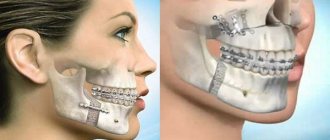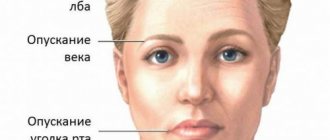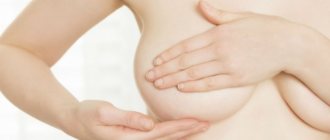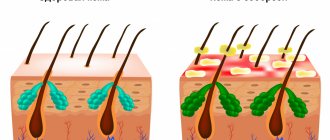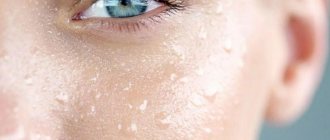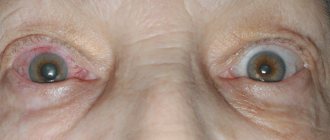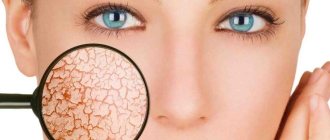A girl covers her breasts with her hands: UGC Why is one breast larger than the other? It is normal to ask this question and there is nothing abnormal here. Normally, it is recommended to undergo examination by a mammologist once a year. If you do this, then there is nothing to worry about. Let's look at the reasons and decide what can be done in such cases.
Are different breasts normal?
There are no identical things in nature. A symmetrical face is the work of a surgeon, bust, check with a plastic specialist. There are exceptions, but not often. The bust is not normally symmetrical.
Asymmetry is possible due to the location of the heart. If the gland is small, it is noticeable.
The question remains, how much asymmetry is acceptable? You won’t notice a difference of 0.5 sizes, but 2 sizes is inconvenient and not always the norm. To eliminate this “pathology” you will need an endoprosthesis.
If the difference is not radical, but moderate. Let's try to fix it ourselves (Taoist massage, exercises).
Now we are not talking about illness or deformation associated with a previous operation. We'll talk about diseases below. And in this case, we go to the doctor, rather than correcting the “defect.”
Breasts changed after breastfeeding
She fed and fed... And with one breast more, it just happened. And she took the child away with a fight. I didn't want to let go. Conclusion: feeding rules were violated and asymmetry developed.
We comply with the rules of the Civil War. We give breastfeeding as soon as the child asks to eat. Apply it to the nipple correctly. Give both breasts, and everything will be fine. We take care of fabrics.
If initially one breast was smaller. With breastfeeding (breastfeeding), the rules change. And there are 3 leading aspects:
- We start feeding the baby with a small (smaller) gland.
- We strain it to increase the flow of milk and use a breast pump.
- We often give smaller breasts and encourage the child to eat from the small gland.
The latter is difficult to do if there is little milk. This is why we strain ourselves. Using your hands (just be careful not to stretch the skin or suck out the milk).
We do not allow lactostasis and mastitis during lactation. Both glands need to be fed. Just less and more often.
After the end of breastfeeding, there is a chance that the bust size will even out.
Moreover, if you want to make your breasts the same and maintain their elasticity, you will need our advice on how to do this during pregnancy and lactation.
It is already clear that if one breast has become larger after pregnancy and breastfeeding, you have not fed the baby correctly. The child helped you stretch the tissues. There are 2 options here:
- wait for 2 births and correct the situation;
- if the breasts are not very different in size, wear pads in your bra, and do exercises to tighten the skin so that the underlying tissues do not sag (read about this in our special articles) tighten the “sagging” breasts; the difference will not be so noticeable;
There is really a 3rd way out: if the operation does not bother either the woman or her man, then you can contact a plastic surgeon.
Natural Methods for Reducing Breast Size
It is possible to reduce breast size through exercise and diet changes.
There are several natural options that can reduce breast size without surgery. Breasts contain mostly fat, so strategies that reduce overall body fat may work well.
The correct method for reducing breast size depends on the person's overall health and the cause of large breasts, which may include hormonal conditions or obesity.
Women concerned about breast health should consult their doctor before making significant lifestyle changes.
Diet
Breasts are primarily made up of adipose tissue or fat. Losing body fat can reduce a woman's breast size.
A low-calorie, highly nutritious diet can indirectly help shrink breast tissue.
Focus on eating nutritious foods that are low in calories. Fruits, vegetables, fatty fish such as salmon, and lean meats such as fried chicken can help you feel full, supporting healthy weight loss.
If you are breastfeeding or pregnant, you should talk to your doctor or midwife before trying to lose weight.
Exercises
Just like diet, exercise can help you lose fat, which can also help reduce breast size over time.
Many people mistakenly believe that targeted exercise can burn fat in a specific area. While push-ups and other chest exercises will tone the muscles in your arms and chest, they will not directly remove fat from your chest. The key is the fact that you need to burn fat throughout your body.
Exercises to strengthen the cardiovascular system are very effective in burning fat. Depending on their health and fitness levels, people may try running, swimming or brisk walking.
Reduce Estrogen
Flaxseed may help lower estrogen levels.
Estrogen plays a key role in the development of breast tissue. Thus, dealing with excess estrogen can reduce breast size, especially in people with hormonal imbalances.
Hormonal contraceptives contain estrogen and progesterone and can enlarge the breasts. The effect usually goes away as soon as you stop taking the medication.
Some studies show that you can reduce estrogen levels in your body by changing your diet.
For example, animal studies suggest that flaxseed supplements may help regulate estrogen levels by reducing estrogen expression in the ovaries. Flaxseed may also protect the heart, reduce the risk of cancer, and prevent breast enlargement.
There is, however, little data on natural remedies to reduce estrogen levels in the body. Talk to your doctor about estrogen-lowering medications.
Wrapping
Wrapping involves tying a tight band around the chest to flatten it. It will not shrink breast tissue or prevent breast growth, but binding can help breasts look smaller and may help you feel more comfortable. Talk to your doctor about the safest way to use the wrap.
Changing your bra
A bra cannot permanently change breast size, but mini bras can create the illusion of smaller breasts. These bras reshape the breasts to make the breasts appear flatter and higher.
Some mini bras can also reduce back and neck pain.
Finding a supportive, well-fitting bra can greatly improve your comfort level. Many stores offer free bra fitting services. Simply changing your bra can reduce the pain associated with large breasts.
Different bust sizes during pregnancy
What to do during pregnancy, the answer is NOTHING. In addition to regular care. It is described in our special articles. Even if your bust continues to differ in size. If one breast has become larger in size after childbirth and looks very disproportionate, hurry up and see a doctor.
If changes appeared during pregnancy, the bust has changed significantly (and one-sidedly), hurry to see a mammologist.
It is important! If you were not examined before conception or you had breast diseases (neoplasms). Pregnancy stimulates tumor growth. And you may have to part with neoplasms (tumors) if they are dangerous to the mother’s life while still carrying the baby.
In youth - we disguise
Is it normal for breasts to be different? Yes, it's fine, if not very different. The degree of difference and its cause are determined by the doctor. The gland grows unevenly. Both in time and location. Development in girls is not uniform. Not at the same age, but in the range from 11 to 18 years. Are you 12? This does not mean that you are a proud “carrier” of a size 2 bust. Smaller breasts? This is not a pathology.
Remember, no two organs are the same, not even paired ones. Look at the stars.
Where is the symmetry here? Same bust?
What to do if your breasts are different at 16 years old:
- Wait until it grows and is completely formed.
- Wear inserts. They mask bust differences. There are silicone inserts (which are slightly comfortable to the touch and differ from a prosthesis) and bras made so that the insert can be inserted.
- Wear loose clothing and throw tight-fitting tops in a landfill.
- Or order custom tailoring to disguise your small... flaw.
Experts advise sitting sideways to the interlocutor so that he cannot see the difference, if the difference is noticeable. Go to the doctor. If he says that the glands are normal, focus less on their size and uniformity.
It sounds rude, yes... But you will hear this if there is no evidence of a serious pathology. Try also exercises for the bust, contrast shower. The exercises and diets described in our articles for bust enlargement are suitable.
The surgeon screwed up
Modern methods of endoprosthetics are being improved. Frank non-specialists do not sit too long in the chairs of practicing doctors. But, the difference in the size of the glands may be associated with the prosthesis after mammoplasty if:
- the prosthesis is chosen incorrectly;
- the patient did not comply with the rehabilitation regime;
- I chose a cheap saline prosthesis, and it simply burst (the rupture of a modern implant is visible on an MRI, but not visually);
- got into an accident;
- The client develops contracture.
Breast asymmetry after mammoplasty
Less commonly, asymmetry appears after breast lift or gland reduction surgery. In this case, no exercises, no selection of underwear, no push-ups or pads in the bra. We go to the doctor who performed the intervention.
Preparation for surgical correction of breast asymmetry
Before the intervention, during a consultation, the patient and the surgeon discuss the surgical options and select the best correction method. During the conversation, the doctor listens to the patient’s wishes and expresses his opinion on this matter. After this, the specialist examines the breast, takes the necessary measurements, and explains the nuances of the procedure, which may be related to age characteristics, type and degree of asymmetry.
Before surgery, the doctor finds out whether the patient is completely healthy. An examination is also carried out, which includes:
- Breast ultrasound;
- various blood and urine tests;
- ECG;
- examination by a mammologist;
- consultation with an anesthesiologist.
10 days before surgery, the patient should stop taking medications that contain aspirin, vitamin E and lecithin. In the evening before the procedure, you need to take a bath, you can have a light dinner. On the day of surgery, you are prohibited from eating or drinking water.
Fortunately, modern mammoplasty can solve any problems associated with breast asymmetry. During the operation, you can enlarge or reduce, tighten or change the shape of the breast. To do this, you need to choose a qualified surgeon and perform the necessary procedure.
If all rehabilitation rules are followed, the risk of postoperative complications is minimal. Scars after mammoplasty remain pink for 3-5 months, after which they gradually lighten and become almost invisible.
Possible tumor!
What to do if the breasts were symmetrical, at least relatively, and then this changed? Contact a mammologist urgently:
- Temporary breast enlargement, swelling and pain on the affected side accompany mastopathy. Usually women say “those breasts have turned to stone.”
- Deformation of the gland, changes in skin color, peeling, and retraction of the nipple are a sign of cancer.
- You notice an enlargement of the breast, and then its decrease when pressing on the nipple (this causes bloody contents to be released). This indicates intraductal papilloma.
Even if the contours of your bust have simply changed, but nothing hurts, go to the doctor. Fibroadenoma may not cause pain, but cancer hurts at the last stage, when it is almost impossible to fix anything.
How many women suffer from breast asymmetry?
In fact, this is a very interesting and difficult question, because almost every woman has incomplete symmetry in the size of the mammary glands. The question is when is it a problem and when should something be done about it.
It is important to know that breast unevenness is normal to a certain extent and is much more common than people think. 10 - 15% of patients who come for examination to gynecologists or mammologists have significant asymmetry of the mammary glands.
Causes of pathology
Why does such a pathology develop or does the bust grow later than others? There is no answer that satisfies the teenager. Therefore, they usually talk about the causes of pathology:
- about genes;
- injuries or burns;
- mastopathy or other breast diseases (for women);
- about disruption of the development of glands for unknown reasons;
- violation of the rules of breastfeeding (breastfeeding);
- hormone levels in adolescence and during menopause or immediately after an abortion;
- oncology, if any.
And about the recent bust enlargement surgery. Well, they did something wrong.
Contraindications to mammoplasty
Breast surgery is a surgical operation for which the body must be prepared.
Intervention cannot be carried out if:
- infectious diseases in the acute stage;
- oncological processes;
- pregnancy;
- pathologies that cause bleeding disorders;
- systemic autoimmune connective tissue diseases;
- diabetes mellitus;
- severe chronic diseases;
- immunodeficiency pathologies.
Mammoplasty is not performed on breastfeeding mothers. It is necessary to wait until the end of the lactation period and only after six months to a year to assess the need for intervention.

